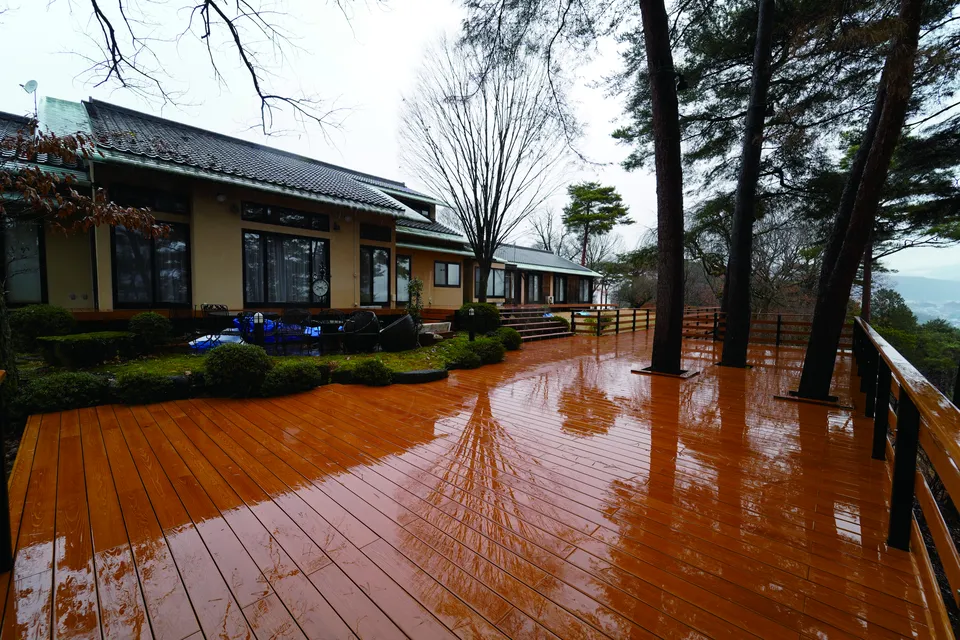Decking Industry at a Crossroads

The decking industry in North America is at a crossroads. The price of natural wood — all of cedar, treated and hardwood — increase on a regular basis. But the wood deck is not getting any better; in fact, it’s getting worse. Wood decking now requires annual maintenance due to inadequate staining and sealant products available. The EPA have banned the effective oil-based products leaving the consumer with lackluster products that fade in the sunlight, gather mold and mildew in the rain and peel off within one to two years. The wood deck lifespan is shortened by a significant amount under current conditions. The net sum is that within the past five to ten years the wood deck has increased in price yet decreased in usability.
Composite decking material - a blend of extruded Polyethylene (PE) plastic and wood pulp - solves many of the problems of wood decking. It does not deteriorate in rain and snow. Dirt is easily power washed away without damaging the surface and embedding into a porous surface. Compositions don’t splinter; insects do not eat the material. The deck never needs sanding and never needs staining or sealing.
While superior to wood, current composite decking made of extruded Polyethylene (PE) have introduced a few problems of their own. PE fades quickly in the sunlight and has no structural integrity of its own. High-end composite decking is either capped with Polyvinyl Chloride (PVC) or made entirely of extruded PVC. PVC has good UV resistance but is very hot to the touch and also has no structural integrity of it’s own.
Contractors do not like working with PE and PVC composites because of their heavy weight and cumbersome nature. Composites are difficult to cut because they sag under their own mass and slip around on the base of a mitre-saw. The intrinsic limitation of all existing composite decking comes from the plain fact that the plastic has little to offer in terms of structural strength and ability. The structural component and cosmetic makeup come from one material in today’s composite decking material.

Ayagi is a completely new type of composite decking that not only solves the initial problems with wood decking but also solves the new problems introduced by existing composite decking products.
Ayagi is comprised of a metal structural skeleton surrounded by urethane plastic that is lighter, less expensive to ship, easy to carry on the job site as well as superior in structural ability. It’s made of a rival plastic component that continues to offer excellent UV resistance but is cool to the touch. In addition, the Urethane plastic provides a considerably more realist wood grain pattern that cannot be created through the extrusion of PE and PVC that creates length-wise striations. Less plastic is used in its composition because of its aluminum structural center. Therefore, Ayagi is light and does not sag under its own weight. This makes Ayagi the lightest and easiest to maneuver on the site and cut on a saw without any problems.
And there's more. Ayagi solves the major issue with PET and PVC composites. A PVC composite deck is unbearable in the sun; it often ends up being covered with an outdoor carpet. The material warps and bends in the heat making it difficult to install in the sun. This is found in fencing as well. The unreleased pent-up heat causes the release of toxic, chlorine-based chemicals. For this reason, PVC is considered to be the most environmentally damaging plastic according to various health organizations, the National Institutes of Health (NIH), Greenpeace Foundation and EcoCycle.
And like its predecessors, Ayagi does not deteriorate in rain and snow. Dirt is easily washed away without damage, it doesn’t splinter and our product never needs sanding and never needs staining or sealing to look like new.